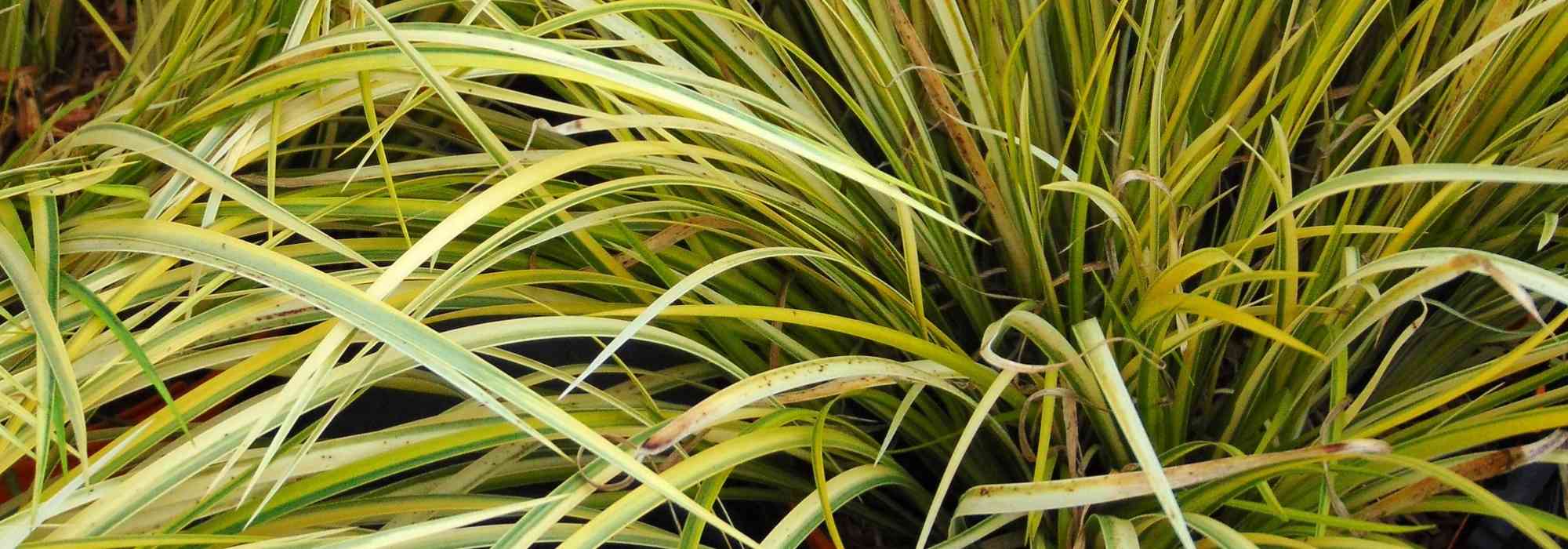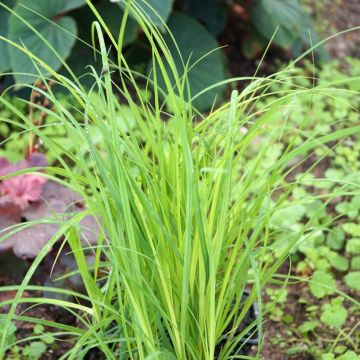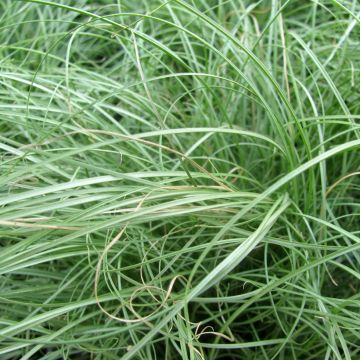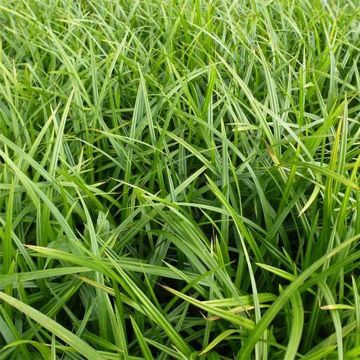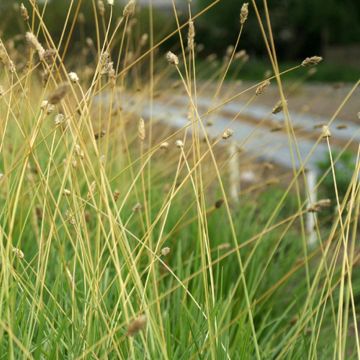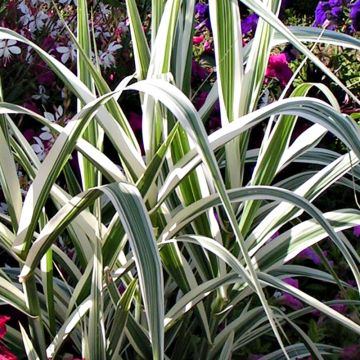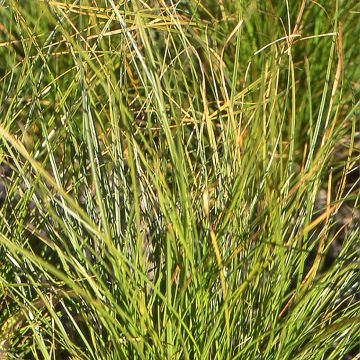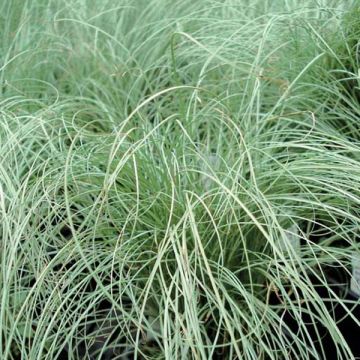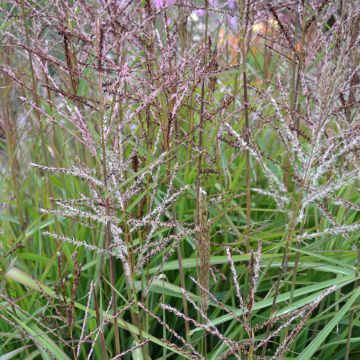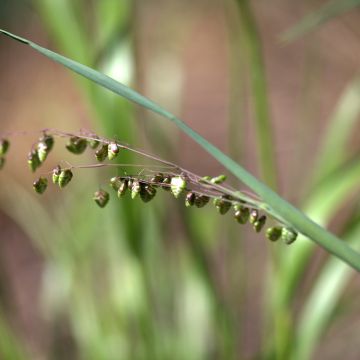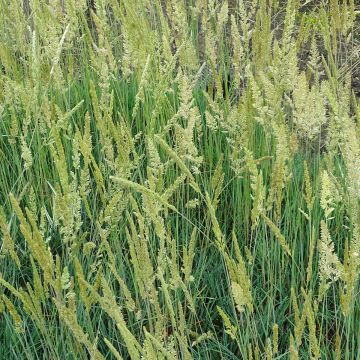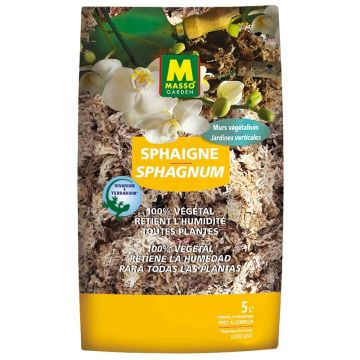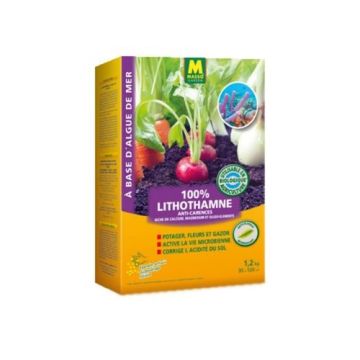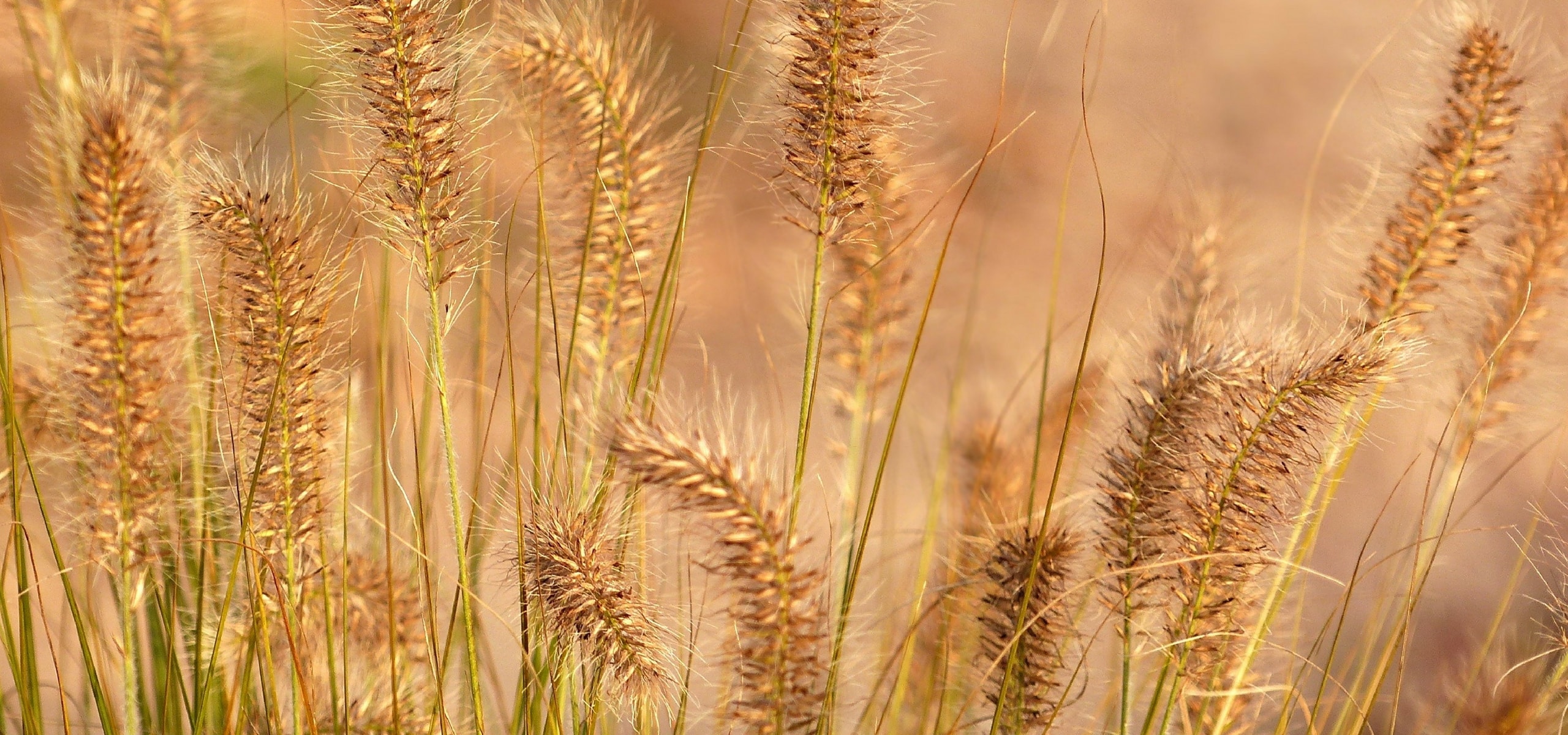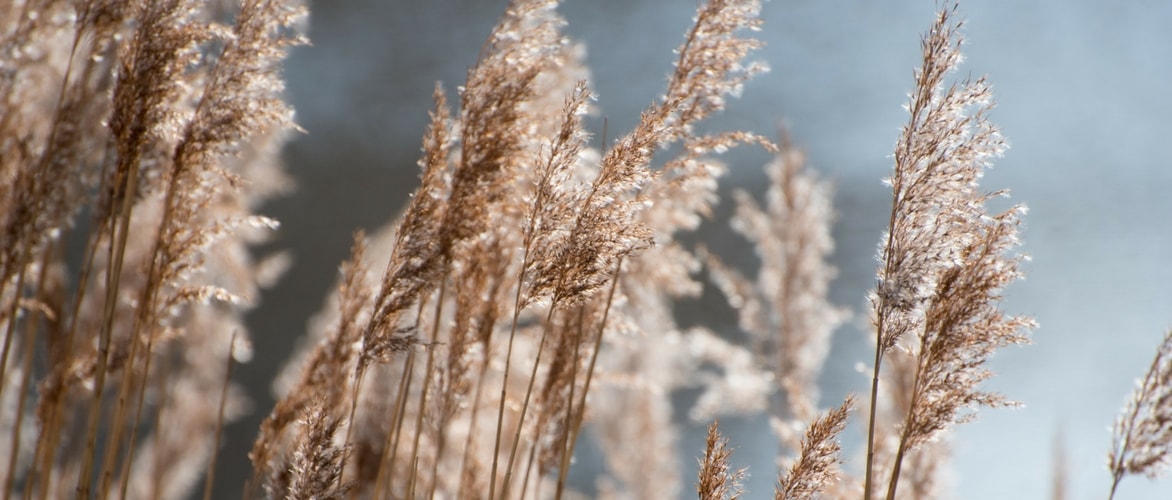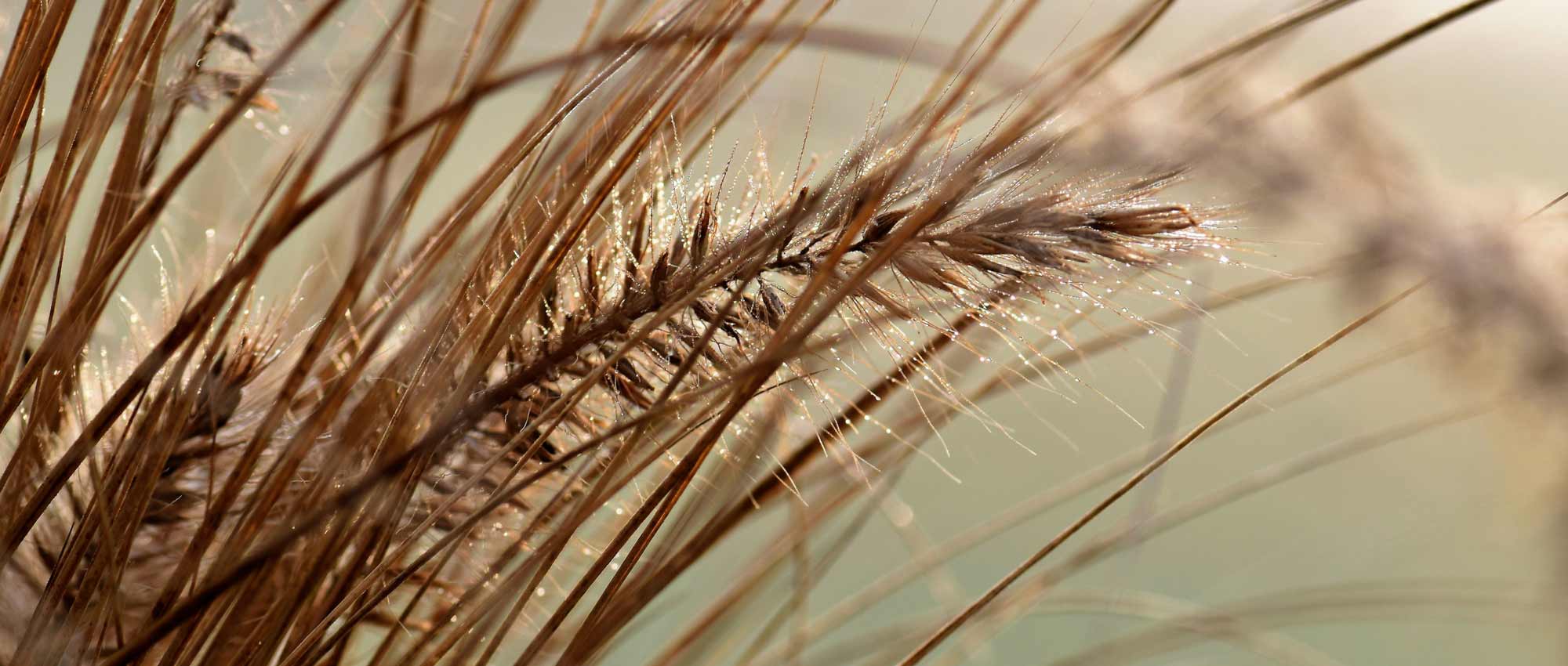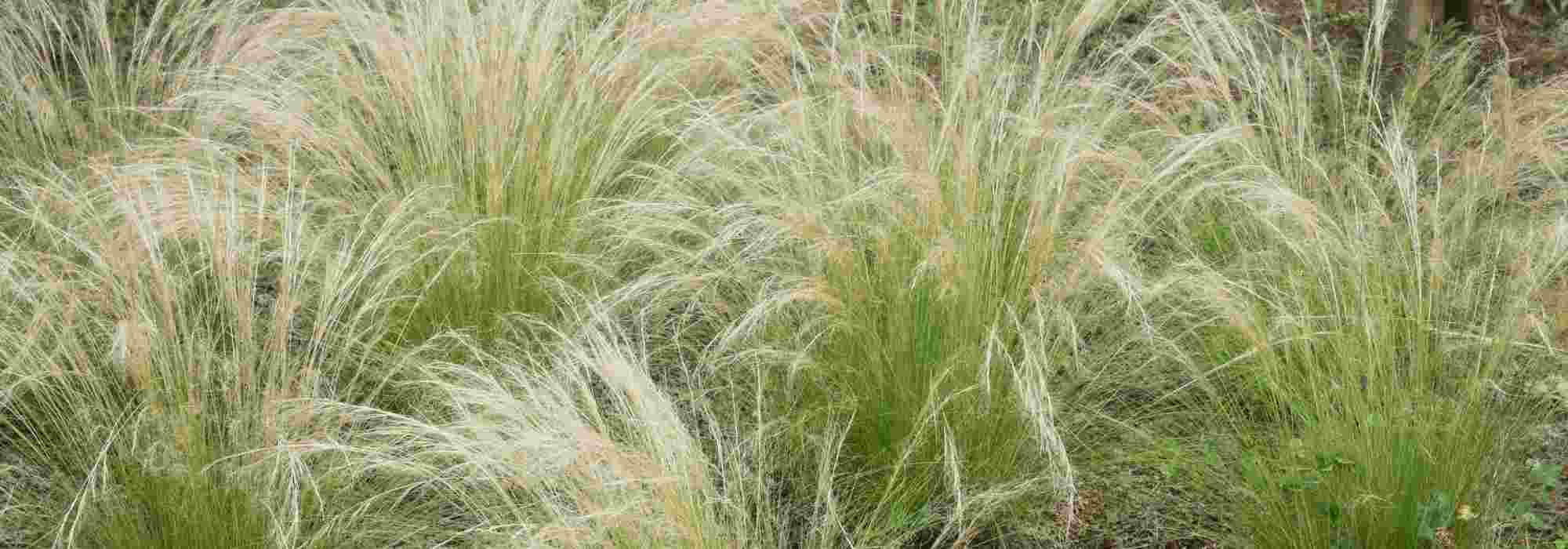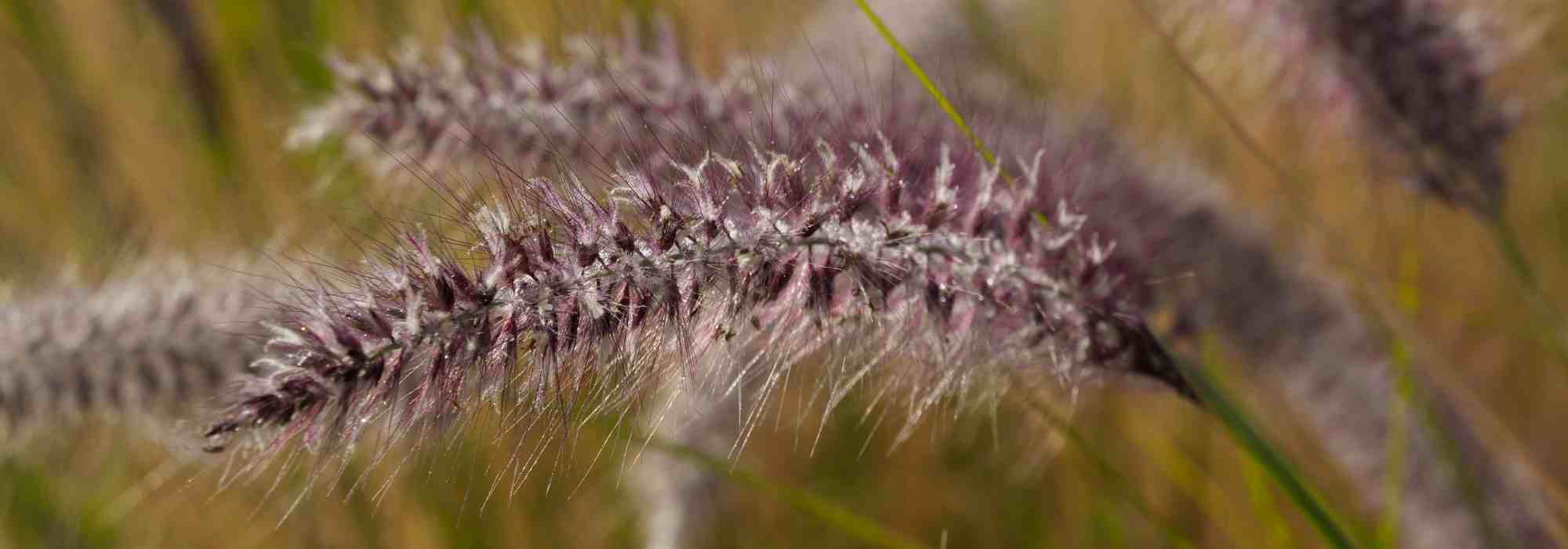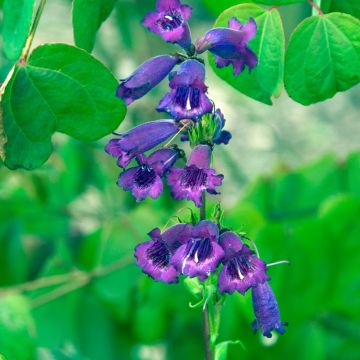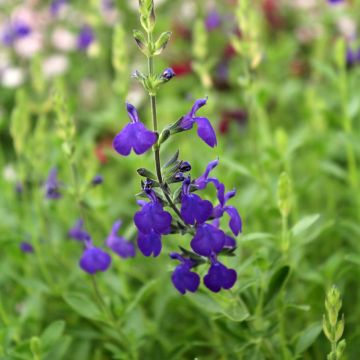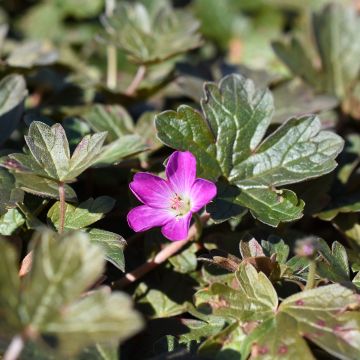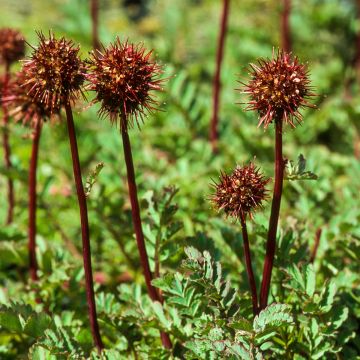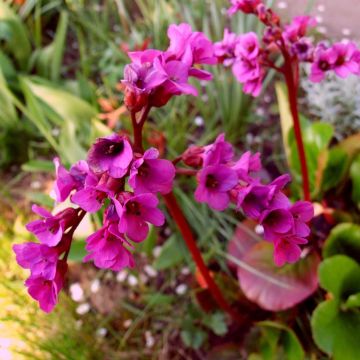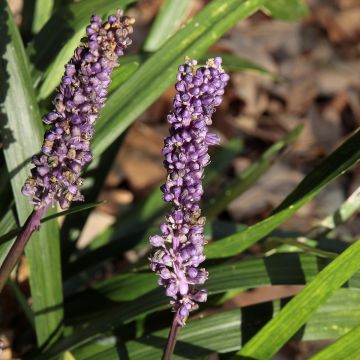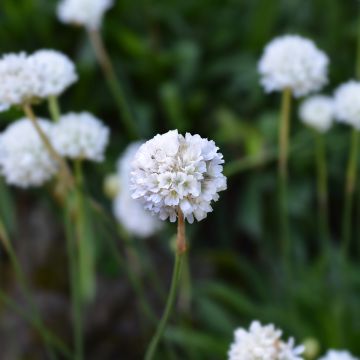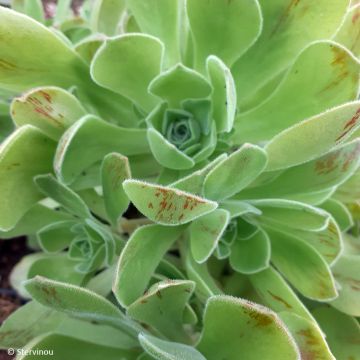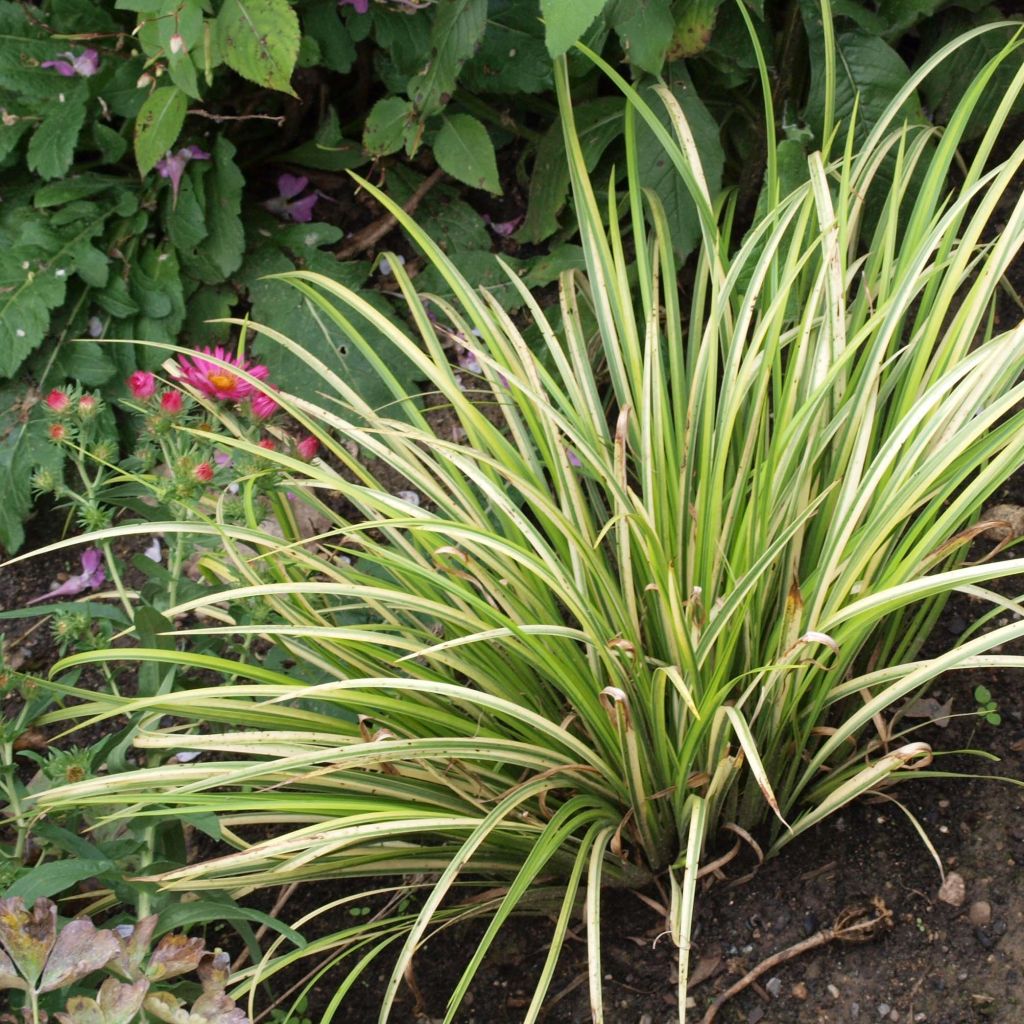

Acorus gramineus Variegatus
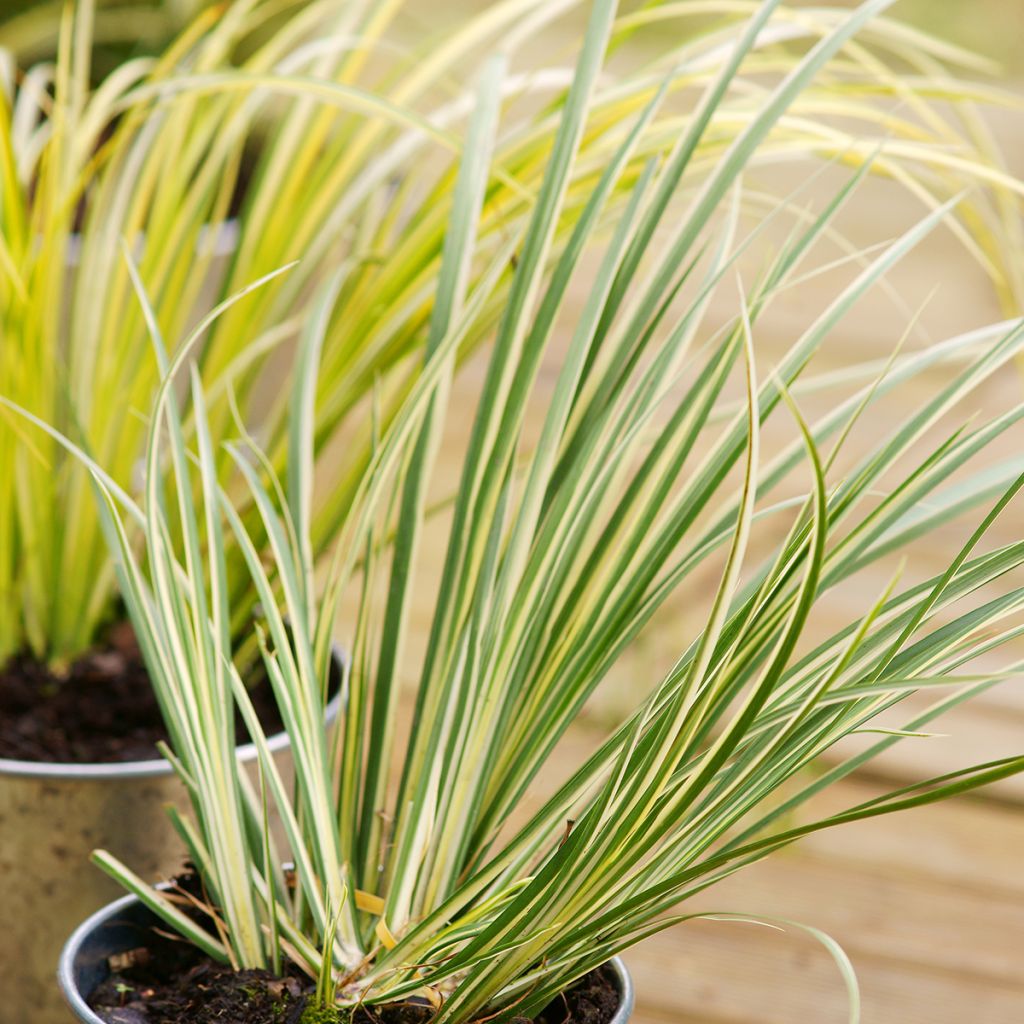

Acorus gramineus Variegatus
Acorus gramineus Variegatus
Acorus gramineus Variegatus
Grass-leaved sweet flag, Japanese rush
Hello! I've had this young plant for at least five years, it hasn't grown because I made the mistake of planting it in my water filtration system for my ponds... The pumice doesn't seem to suit it, it survives, the leaves remain beautiful but it doesn't progress. But learning from bad experiences, I will therefore put it in a pot with soil, placed in a waterfall. I will then see if this way it grows better.
Françoise Marie, 17/05/2017
Special offer!
Receive a €20 voucher for any order over €90 (excluding delivery costs, credit notes, and plastic-free options)!
1- Add your favorite plants to your cart.
2- Once you have reached €90, confirm your order (you can even choose the delivery date!).
3- As soon as your order is shipped, you will receive an email containing your voucher code, valid for 3 months (90 days).
Your voucher is unique and can only be used once, for any order with a minimum value of €20, excluding delivery costs.
Can be combined with other current offers, non-divisible and non-refundable.
Home or relay delivery (depending on size and destination)
Schedule delivery date,
and select date in basket
This plant carries a 12 months recovery warranty
More information
We guarantee the quality of our plants for a full growing cycle, and will replace at our expense any plant that fails to recover under normal climatic and planting conditions.
Would this plant suit my garden?
Set up your Plantfit profile →
Description
Acorus gramineus 'Variegatus' is a variety of dwarf sweet flag or Japanese rush that is particularly ornamental and bright, although slightly less hardy than the species. This pretty perennial plant prefers moist to wet soil, and can even be grown submerged under 10 to 15cm (4 to 6in) of water, preferably in partial shade to protect its beautiful variegated light green foliage with cream accents. Its foliage, both dense and delicate, gathered in a slightly spreading cluster, remains decorative for much of the year. A very pretty plant, both ornamental and medicinal, ideal for decorating small ponds, water edges, waterfalls, and streams!
Acorus gramineus is a plant of the Acoraceae family, native to Japan, Korea, and eastern Asia. From the slightly creeping stump emerge leaves that resemble those of iris, but narrower, tough, thick, shiny, with a beautiful light green colour and a central white-cream stripe, a very bright colour in a semi-shaded area. It is aromatic when crushed and has a rather aniseed scent. The rhizomes, used in traditional Japanese medicine, are also fragrant, reminiscent of liquorice. This slow-growing perennial plant is not invasive. At maturity, it will form a 30cm (12in) cluster in all directions. The greenish flowers are almost invisible, gathered in a short spadix and appear at the beginning of summer.
This variegated Japanese rush forms a large cluster in a few years, which goes perfectly with Japanese irises, Asian primroses, or willows on the edges of a pond. Similarly, you can also plant it in a trough or in a garden with particularly heavy and moist soil.
We have planted a variety similar to Acorus gramineus 'Variegatus' in one of our ponds, where its semi-evergreen foliage is very useful as most water edge plants disappear in winter. Acorus gramineus is considered non-hardy, but it has been outside for over 20 years and does not suffer from the cold. It may be preferable to overwinter it in a cold greenhouse or in a well-ventilated and sunny location, protected from frost, while keeping the soil consistently moist in regions with colder winters.
Acorus gramineus Variegatus in pictures
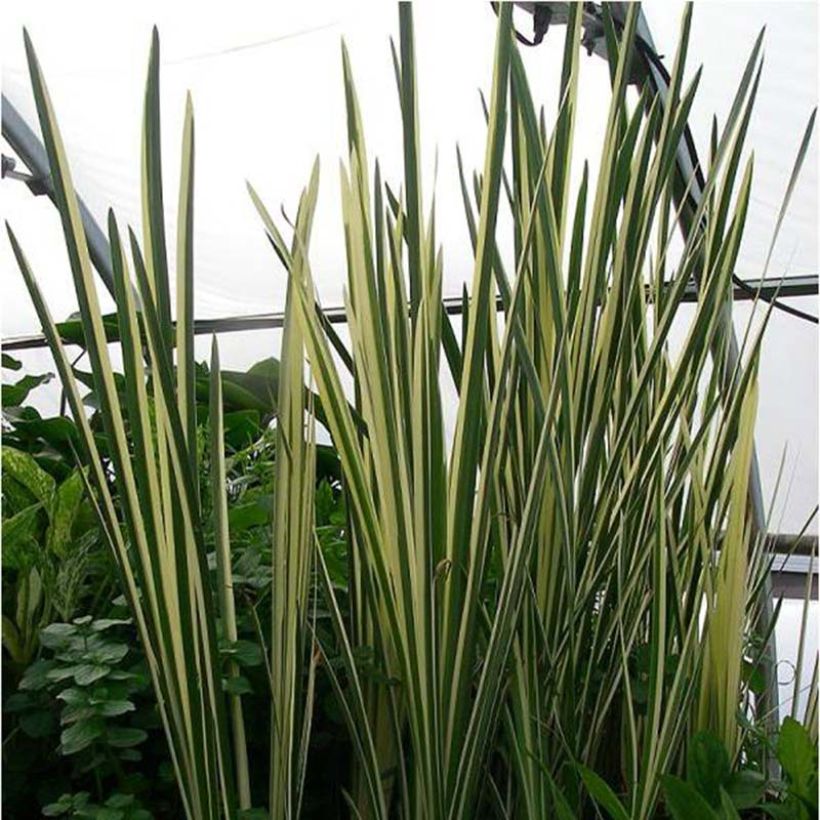

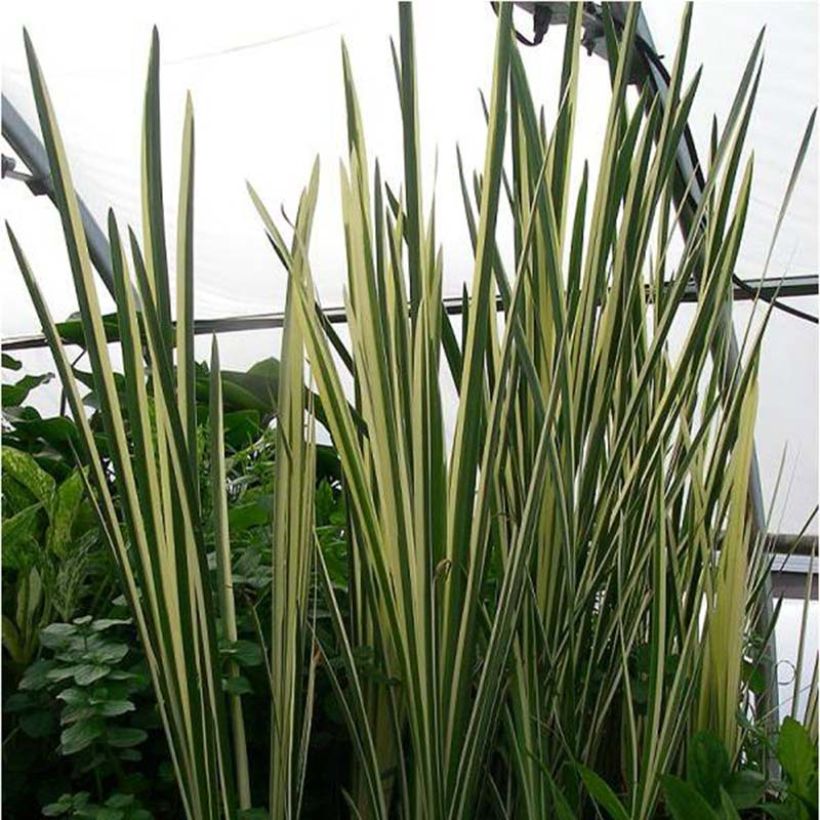

Flowering
Foliage
Plant habit
Botanical data
Acorus
gramineus
Variegatus
Araceae
Grass-leaved sweet flag, Japanese rush
(Variegata)
Cultivar or hybrid
Other Ornemental grasses A to Z
View all →Planting and care
The Variegated Acorus gramineus is best planted in spring, in a partially shaded position to protect its variegated foliage. Plant it in crevices of dripping rocks or on the edges of a pond, in heavy, moist or even marshy soil preferably in spring. In colder regions, place the plant, with a clod of soil, in a large pot or some kind of container. Place it in a cold greenhouse or a well-ventilated, bright location protected from frost. The soil should be kept constantly moist.
Planting period
Intended location
Care
Planting & care advice
-
, onOrder confirmed
Reply from on Promesse de fleurs
Similar products
Haven't found what you were looking for?
Hardiness is the lowest winter temperature a plant can endure without suffering serious damage or even dying. However, hardiness is affected by location (a sheltered area, such as a patio), protection (winter cover) and soil type (hardiness is improved by well-drained soil).

Photo Sharing Terms & Conditions
In order to encourage gardeners to interact and share their experiences, Promesse de fleurs offers various media enabling content to be uploaded onto its Site - in particular via the ‘Photo sharing’ module.
The User agrees to refrain from:
- Posting any content that is illegal, prejudicial, insulting, racist, inciteful to hatred, revisionist, contrary to public decency, that infringes on privacy or on the privacy rights of third parties, in particular the publicity rights of persons and goods, intellectual property rights, or the right to privacy.
- Submitting content on behalf of a third party;
- Impersonate the identity of a third party and/or publish any personal information about a third party;
In general, the User undertakes to refrain from any unethical behaviour.
All Content (in particular text, comments, files, images, photos, videos, creative works, etc.), which may be subject to property or intellectual property rights, image or other private rights, shall remain the property of the User, subject to the limited rights granted by the terms of the licence granted by Promesse de fleurs as stated below. Users are at liberty to publish or not to publish such Content on the Site, notably via the ‘Photo Sharing’ facility, and accept that this Content shall be made public and freely accessible, notably on the Internet.
Users further acknowledge, undertake to have ,and guarantee that they hold all necessary rights and permissions to publish such material on the Site, in particular with regard to the legislation in force pertaining to any privacy, property, intellectual property, image, or contractual rights, or rights of any other nature. By publishing such Content on the Site, Users acknowledge accepting full liability as publishers of the Content within the meaning of the law, and grant Promesse de fleurs, free of charge, an inclusive, worldwide licence for the said Content for the entire duration of its publication, including all reproduction, representation, up/downloading, displaying, performing, transmission, and storage rights.
Users also grant permission for their name to be linked to the Content and accept that this link may not always be made available.
By engaging in posting material, Users consent to their Content becoming automatically accessible on the Internet, in particular on other sites and/or blogs and/or web pages of the Promesse de fleurs site, including in particular social pages and the Promesse de fleurs catalogue.
Users may secure the removal of entrusted content free of charge by issuing a simple request via our contact form.
The flowering period indicated on our website applies to countries and regions located in USDA zone 8 (France, the United Kingdom, Ireland, the Netherlands, etc.)
It will vary according to where you live:
- In zones 9 to 10 (Italy, Spain, Greece, etc.), flowering will occur about 2 to 4 weeks earlier.
- In zones 6 to 7 (Germany, Poland, Slovenia, and lower mountainous regions), flowering will be delayed by 2 to 3 weeks.
- In zone 5 (Central Europe, Scandinavia), blooming will be delayed by 3 to 5 weeks.
In temperate climates, pruning of spring-flowering shrubs (forsythia, spireas, etc.) should be done just after flowering.
Pruning of summer-flowering shrubs (Indian Lilac, Perovskia, etc.) can be done in winter or spring.
In cold regions as well as with frost-sensitive plants, avoid pruning too early when severe frosts may still occur.
The planting period indicated on our website applies to countries and regions located in USDA zone 8 (France, United Kingdom, Ireland, Netherlands).
It will vary according to where you live:
- In Mediterranean zones (Marseille, Madrid, Milan, etc.), autumn and winter are the best planting periods.
- In continental zones (Strasbourg, Munich, Vienna, etc.), delay planting by 2 to 3 weeks in spring and bring it forward by 2 to 4 weeks in autumn.
- In mountainous regions (the Alps, Pyrenees, Carpathians, etc.), it is best to plant in late spring (May-June) or late summer (August-September).
The harvesting period indicated on our website applies to countries and regions in USDA zone 8 (France, England, Ireland, the Netherlands).
In colder areas (Scandinavia, Poland, Austria...) fruit and vegetable harvests are likely to be delayed by 3-4 weeks.
In warmer areas (Italy, Spain, Greece, etc.), harvesting will probably take place earlier, depending on weather conditions.
The sowing periods indicated on our website apply to countries and regions within USDA Zone 8 (France, UK, Ireland, Netherlands).
In colder areas (Scandinavia, Poland, Austria...), delay any outdoor sowing by 3-4 weeks, or sow under glass.
In warmer climes (Italy, Spain, Greece, etc.), bring outdoor sowing forward by a few weeks.






























